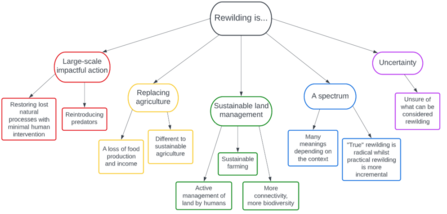Maëlle Jacqmarcq from Imperial College London recently completed her MSc thesis project with Surrey Wildlife Trust, as part of our Research & Monitoring programme. Her work investigated the attitudes and perceptions of rewilding amongst Surrey's private landholders, 8 of which she interviewed for the project. This blog is a summary of her research and conclusions. If you're interested in the Trust's research and monitoring work, please take a look at our page here.
Rewilding is a conservation method which has emerged and gained traction in the UK since the early 2000s, perceived as a powerful tool to reverse human-induced ecological degradation. The recent Environmental Land Management Schemes (ELMS) have introduced the idea of ‘public money for public goods’ and have made some rewilding initiatives viable for landholders. In this context, rewilding has become the source of controversial, polarising, and emotion-filled public debate in the UK, with proponents praising the ecological benefits and socio-economic opportunities of rewilding, and opponents questioning its ecological soundness and impact on food production and rural livelihoods.
Landholders, like other groups within the UK, have a plethora of meanings associated to the term rewilding. Many of them thought of it as "large-scale" actions, such as the reintroduction of lynx and wolves, whilst others recognised it could be on a spectrum of different scale actions. There were also mixed understandings of whether rewilding would replace agriculture and damage food security, or whether it was part of sustainable land management. General uncertainty about the meaning of rewilding also existed, which caused rewilding actions to either be avoided or delayed among some landholders.




